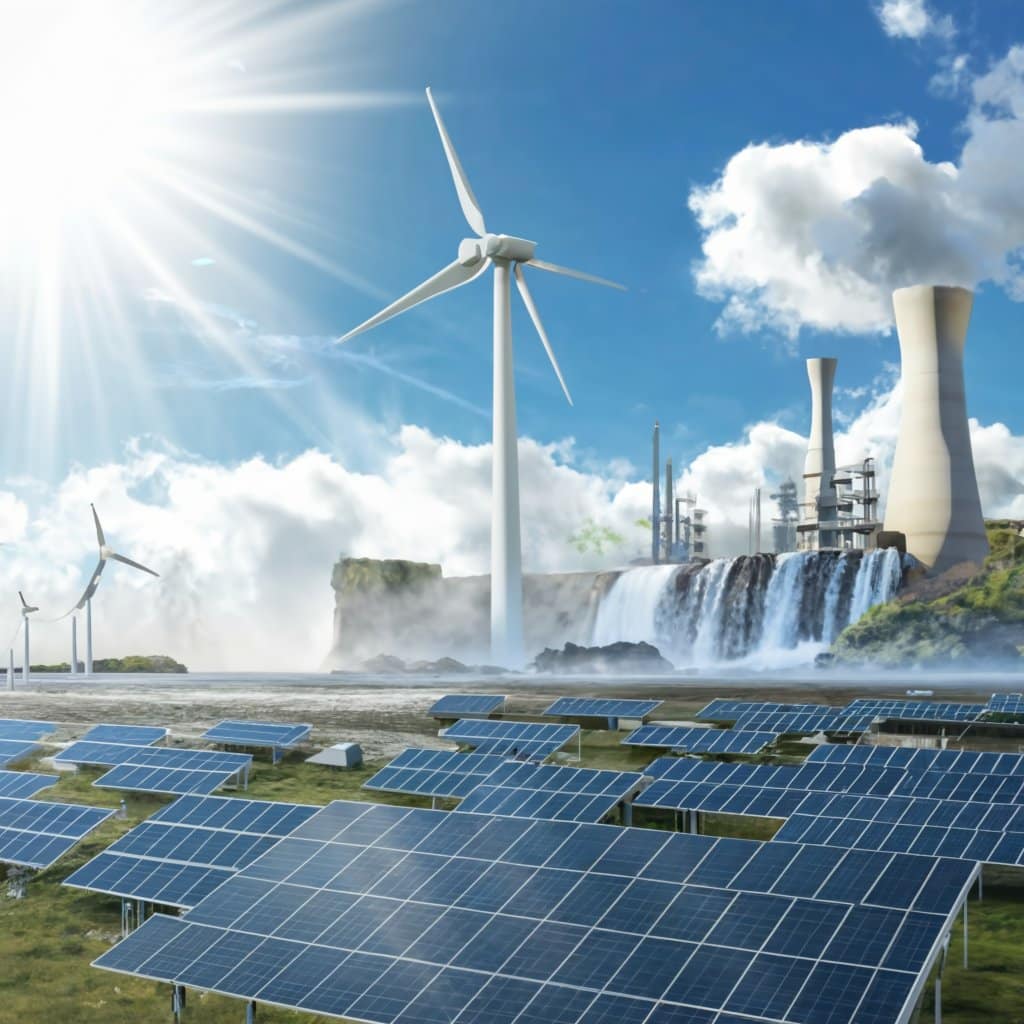
renewable energy sources
Introduction to Renewable Energy Sources
As global concerns about climate change and environmental impact grow, renewable energy sources have emerged as a vital component of a sustainable future. Renewable energy, derived from natural processes replenished continuously, offers a cleaner, more sustainable solution compared to fossil fuels. With technologies advancing, renewable sources like solar, wind, hydro, and geothermal energy are becoming more accessible and affordable. This article explores the types, benefits, challenges, and future of renewable energy sources, providing insights into how they can lead to a greener, more sustainable world.
What are Renewable Energy Sources?
Renewable energy sources are derived from natural resources that are replenished naturally over short periods. Unlike fossil fuels, which are finite and contribute significantly to carbon emissions, renewable energy sources are sustainable and eco-friendly. Key types of renewable energy include:
1. Solar Energy
Solar energy is captured from sunlight and converted into electricity using photovoltaic cells or solar thermal systems. Solar power is one of the most abundant and widely used renewable sources, with applications ranging from residential rooftop panels to large-scale solar farms. Advances in technology and decreasing costs make solar energy increasingly accessible and efficient.
2. Wind Energy
Wind energy harnesses the power of wind to generate electricity using wind turbines. It is a clean and efficient energy source with substantial potential, particularly in regions with strong wind resources. Wind farms, both onshore and offshore, are becoming a significant part of the global energy mix, reducing reliance on fossil fuels.
3. Hydropower
Hydropower, or hydroelectric power, uses the flow of water to produce electricity, typically through dams. As one of the oldest renewable sources, hydropower is highly reliable and can provide significant electricity output. However, it requires specific geographical conditions and can impact local ecosystems.
4. Geothermal Energy
Geothermal energy leverages heat from beneath the Earth’s surface to generate power. This energy source is consistent and reliable, providing a stable energy supply. Geothermal plants are less common due to geographical limitations but are essential in volcanic areas with easy access to geothermal heat.
Benefits of Renewable Energy Sources
The shift to renewable energy offers several benefits that make it an attractive alternative to traditional fossil fuels. Here are some key advantages:
1. Environmental Benefits
Renewable energy sources produce little to no greenhouse gas emissions, significantly reducing air pollution and mitigating climate change. By replacing fossil fuels, renewables help protect ecosystems and public health.
2. Sustainability
As natural resources, renewable energy sources are inherently sustainable. They are replenished continuously, ensuring a long-term energy solution without the risk of depletion, unlike coal, oil, and natural gas.
3. Economic Benefits
The renewable energy sector creates jobs across manufacturing, installation, maintenance, and research. The shift towards renewable sources has already led to economic growth in regions adopting these technologies, diversifying economies and reducing dependency on imported fuels.
Challenges of Renewable Energy Sources
Despite its benefits, renewable energy faces challenges that hinder its widespread adoption. Understanding these challenges is essential for overcoming them and promoting renewable growth:
1. Intermittency
Renewable sources like solar and wind depend on weather conditions, causing intermittent power supply. Cloudy days and calm periods affect solar and wind energy production, requiring effective energy storage solutions to ensure consistent power.
2. High Initial Costs
Although the operational costs of renewable energy are low, the initial investment for infrastructure can be high. Solar panels, wind turbines, and hydroelectric dams require significant capital, making them less accessible without governmental support and incentives.
3. Geographical Limitations
Certain renewable sources depend on specific geographical conditions. For example, geothermal energy requires volcanic activity, and hydropower needs large bodies of water. Such limitations restrict where these energy sources can be efficiently implemented.
The Future of Renewable Energy
The future of renewable energy is promising, with advancements in technology, declining costs, and supportive policies accelerating its adoption. Key innovations like improved battery storage, smart grids, and hybrid renewable systems address existing challenges, making renewables more reliable and accessible.
Battery Storage and Smart Grids
Energy storage solutions, particularly advanced batteries, are essential for managing the intermittency of renewable sources. Coupled with smart grids, storage systems enhance energy efficiency and enable grid stability, ensuring a steady energy supply even during low production periods.
Hybrid Renewable Systems
Hybrid renewable systems combine different energy sources, such as solar and wind, to optimize power production. These systems provide a more reliable and continuous energy supply by balancing the strengths and weaknesses of each source.
FAQ Section on Renewable Energy Sources
What are the main types of renewable energy sources?
The main types of renewable energy sources are solar, wind, hydropower, and geothermal. Each source harnesses natural processes to generate electricity sustainably.
Why are renewable energy sources important?
Renewable energy sources are essential for reducing greenhouse gas emissions, combating climate change, and providing a sustainable alternative to finite fossil fuels. They also promote energy independence and support economic growth.
What are the challenges associated with renewable energy?
Renewable energy sources face challenges such as intermittency, high initial costs, and geographical limitations. Technological advancements in energy storage and grid management are helping to mitigate these issues.
How does solar energy work?
Solar energy works by capturing sunlight using photovoltaic cells or solar panels, which convert it into electricity. Solar power can be used for residential, commercial, and industrial applications.
What is the future outlook for renewable energy?
The future of renewable energy is bright, with continuous advancements making it more efficient, accessible, and affordable. Innovations in storage, hybrid systems, and supportive policies will drive its growth, potentially making renewable energy the dominant power source worldwide.






